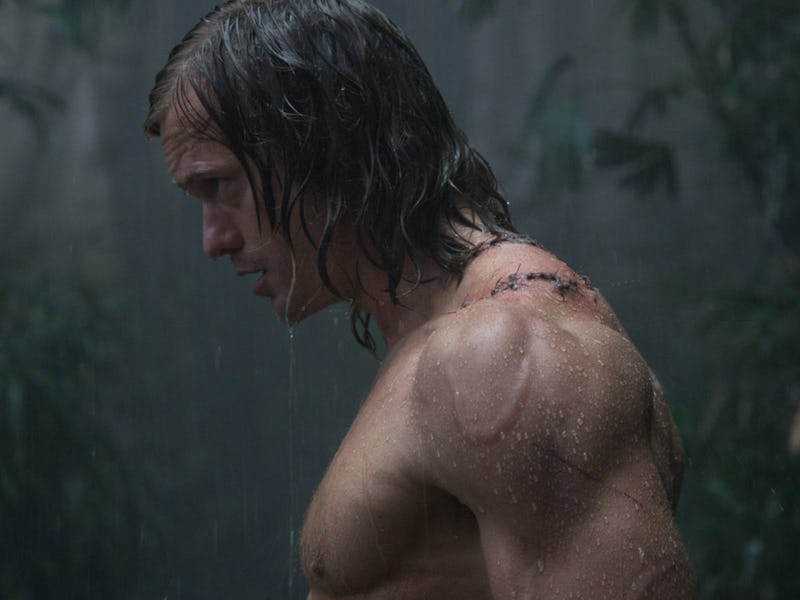What 'The Legend of Tarzan' Can Teach Us About Primate Physiology
There are a lot of similarities between humans and other great apes when it comes to the way we move.

The Legend of Tarzan hit theaters over the weekend, and with it came an opportunity to take a look at one of the most recognizable fictional characters of time through the lens of science.
There are plenty of great physics questions that come with Tarzan with regards to momentum and circular motion, but we’re going to talk a little bit about primate physiology and anatomy, why we move the way we do, and why our ape relatives are so much stronger than we are.
First, let’s establish that the apes in the Tarzan stories are called Mangani, and they’re a fictional species of great apes. The fact that they’re fictional allows for a little bit of wiggle room in the fact vs. fiction department, but we do know that they’re great apes and that gives us a solid starting point for talking about the similarities and differences between apes and humans.
Skeletal Structure
For the most part, humans and other great apes like chimpanzees and gorillas have pretty similar skeletal structures that help us move around. Perhaps most significantly, we have clavicles, shoulders, and arms that give us a nearly 360-degree range of motion and long fingers for grasping, just like our great ape relatives.
On a broad level, we have a lot in common. But when it comes to finer details, we start to diverge. Humans typically have shorter arms than other great apes, our pelvises are wider, and our feet have arches. All of these differences contribute to the very different ways in which we move — more specifically, they have to do with the fact that we’re bipedal and the other great apes are quadrupedal.
Even so, it’s easy to observe the traits that allow chimpanzees and other great apes to climb trees and swing from branches — which we see a lot of in Tarzan. This swinging (called brachiation) is a big part of life for primates. It’s a quick and efficient method for getting around, as it allows primates to use their weight to their advantage as they swing.
Musculature
Chimpanzees are stronger than humans. Like, a lot stronger. We may have them beat in the fine motor skill department but, pound-for-pound, chimpanzees make us look like a bunch of weaklings. The reason could have to do with the way our muscles are controlled.
Their strength might also have something to do with their muscle fiber or the way that their muscles are arranged. It’s difficult to pinpoint why, exactly, chimpanzees get so much more bang for their buck when it comes to muscles, but we do know that what we have in common with chimps is that our muscles work in tandem with our skeletons and joints, working like levers and hinges to help us use our muscles to hold ourselves up and exert force.
Tarzan is fundamentally a critique of society, the way that we live, and the ways in which we’ve lost contact with nature and where we began, but it’s also a great excuse to look at the similarities between our bodies and those of the fictional Mangani or the other (real) great apes. We’re very different on the surface, but our bodies and muscles are built for some of the same purposes, regardless of whether or not we use them in the same way.